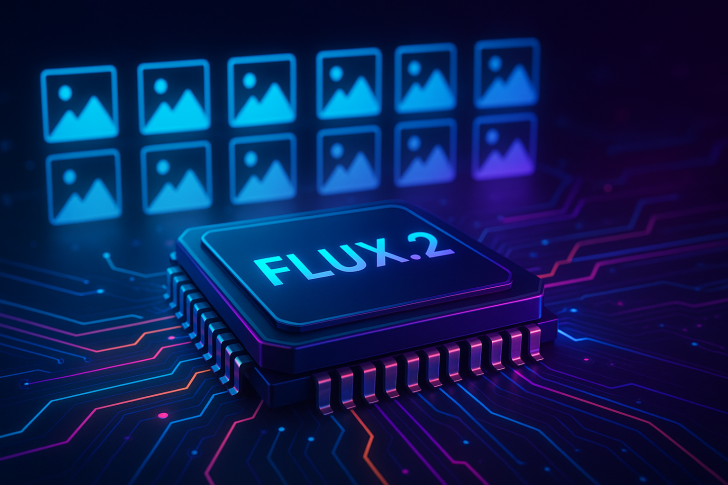⬤ Black Forest Labs just dropped FLUX.2, their latest multimodal model that's pushing the boundaries of AI image generation. The standout feature? You can now feed it up to ten reference images at once, which means way better character consistency and style matching across your outputs. The photorealism got a serious upgrade too—sharper textures, cleaner typography, and the model actually follows your prompts more reliably now.
⬤ Under the hood, FLUX.2 runs on a massive 24-billion-parameter Mistral-3 vision-language model that brings stronger contextual understanding to the table. The system handles high-res editing up to 4MP with flexible aspect ratios and even matches brand colors using hex codes. There's also structured JSON prompting for more precise control. The team built a new FLUX.2-VAE autoencoder from the ground up to tackle the usual compression and quality issues that plague visual models.
⬤ The rollout includes several versions depending on what you need. FLUX.2 [pro] is their commercial powerhouse, generating images at roughly $0.03 a pop through API partners like Adobe and Meta. FLUX.2 [flex] gives you adjustable steps and guidance settings for $0.06 per image. Developers can grab FLUX.2 [dev], a 32B open-weight model that runs on H100 or RTX 4090 hardware with quantization. And there's FLUX.2 [klein] on the horizon—a size-distilled Apache 2.0 version meant for wider access.
⬤ FLUX.2 marks another step forward in the race to deliver more realistic, controllable AI image generation. As these tools get sharper and more accessible, the creative AI landscape keeps shifting—and fast.
 Saad Ullah
Saad Ullah

 Saad Ullah
Saad Ullah


